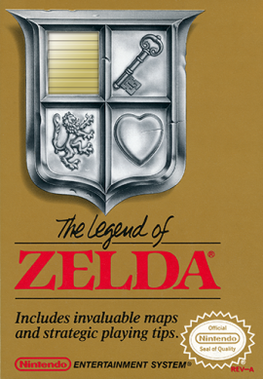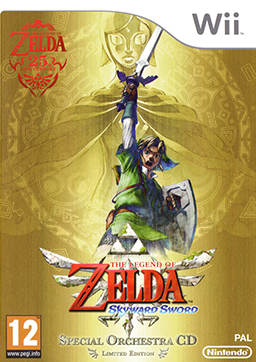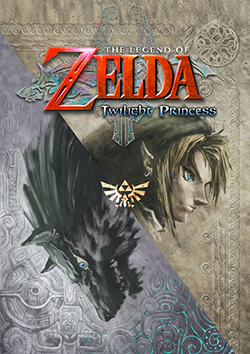Oh boy, I’ve taken on quite a project here.
With a list like this, it really comes down to personal preference. There’s no one clear Zelda game that’s obviously better than the rest. So rather than rank them one through 16, I’m going to break them down into tiers. The games in each tier are roughly as good as each other, and it really comes down to personal preference which game you like out of, say, the top four. So let’s look at the entire series in these groups.
TIER 1: FLAWED GAMES
Zelda II: The Adventure of Link

NES, 1988
The brutally difficult (if you die, you lose all your experience) Zelda II is the result of a decision that still seems baffling today: to take the groundbreaking, top-down adventure of the first game and turn it into a side-scroller with RPG elements. Some love it, but it’s definitely not for everyone, and it’s barely even a Zelda game.
The Legend of Zelda: Four Swords & Four Swords Adventures
Game Boy Advance/GameCube
These games aren’t so much flawed as… inessential. They’re only sort of part of the Zelda canon, and honestly if you forgot they were in the series, you aren’t missing too much. They aren’t flawed like the other games in this tier, but they may be the least interesting entries in the series.
The Legend of Zelda: Phantom Hourglass
DS, 2006
Dragged down by its stylus-based controls, and the need to keep returning to a central temple again and again (and again). Phantom Hourglass returns to the cell-shaded look of Wind Waker, but the DS can’t pull this off nearly as well as the GameCube can (honestly, DS graphics always look oddly stretched out to me, like a weird distortion of what they should be).
The Legend of Zelda: Spirit Tracks
DS, 2009
The bottom line on this game: though it’s better than it could have been, putting the game on a train is just too limiting for a franchise that’s known for exploration. Like Four Swords, it’s not bad, it just doesn’t really feel like something you need to play, even if you’re a fan of the series. This and Phantom Hourglass will probably end up as the forgotten entries in the series, and honestly it won’t be a big loss.
TIER 2: SOLID GAMES
The Legend of Zelda: Oracle of Ages & Oracle of Seasons
Game Boy Color, 2001
If you like 8-bit music, it will increase your enjoyment of these games by about 50% (not a scientific measurement). Very much in the style of Link’s Awakening (minus the dream stuff), Ages is puzzle-focused, while Seasons is action-based. The two connect if played together, which is why they’ve been grouped together here; they’re more like two halves of a whole than two separate games. (But they’re also not like Pokemon Red and Blue; they’re different games, and you should play both).
The Legend of Zelda: The Minish Cap
Game Boy Advance, 2005
A nice return to the Link to the Past style of Zelda games; at the time it was the only game to attempt that style besides the original. Sure, the two worlds mechanic had been done a thousand times by then, but it still led to some inventive puzzles. This remains an underrated member of the series.
TIER 3: GREAT GAMES
The Legend of Zelda
NES, 1986
Gains points for all it did for games in general; loses points for the pitiful effort put into actually letting the player know what the hell was going on. There’s a line between having clever, confusing puzzles and having puzzles that could only be solved through sheer randomness, and this game crosses that line more times than it should. I still enjoy it, though, and it may have the best game cartridge ever made.
The Legend of Zelda: Link’s Awakening
Game Boy, 1993
Today, this kind of game belongs to indie developers who are thinking outside of the box; it’s very unusual for a major developer like Nintendo to release a game like this, and even more so in 1993. It has Mario characters, and the story’s based on a weird fish; in fact, it’s said to have been partially inspired by the surrealist TV series Twin Peaks. If that sounds as awesome to you as it should, give this one a try—the color version is particularly recommended.
The Legend of Zelda: Skyward Sword
Wii, 2011
This game got stellar reviews when it came out, but has a mixed reputation among fans, many of whom didn’t like the motion controls or the empty overworld. Honestly, if you don’t like motion controls, you won’t like this game. If you are OK with the idea of swinging the Wii remote around like a sword, you may enjoy this gorgeous game, which makes the best of Wii graphics with its impressionist painting look. Maybe it’s not the masterpiece it was touted as upon release, but it’s far from the disaster many make it out to be.
TIER 4: AMAZING, BUT NOT QUITE TOP-TIER MATERIAL
The Legend of Zelda: Majora’s Mask
Nintendo 64, 2000
If what you like about Zelda is the characters, this very well may be your favorite Zelda. If you dislike backtracking and want a lot of dungeons you may not like it as much, which is why it lands in this tier (no insult, by the way; these games are all so good that this may well be the sixth-best Zelda game and the sixth-best N64 game.)
The Legend of Zelda: Twilight Princess
GameCube/Wii, 2006
This is another game that has had mixed reactions among fans. The hype reached a fever pitch during the two years between its announcement and release, and with increased hype comes increased backlash. The truth, as it so often is in these cases, resides somewhere in the middle. It’s a great game, and it has so many of the elements that make a Zelda game great, but… there’s just something missing. It’s hard to explain. I think if it weren’t for the burden of being part of this great series, this game would be more loved.
TIER 5: LEGENDARY GAMES*
*Pun very much intended.
The Legend of Zelda: A Link to the Past
SNES, 1992
This is my personal favorite game in the series. This is the Zelda game for you if you want your Zeldas geared toward puzzle solving, want a lot of dungeons, don’t mind 2D visuals, and don’t care so much about characters. This set the template that just about every major Zelda game has followed since, but it’s still superior to those games in many ways: the freedom, the focus on puzzles, the inventive dungeons and bosses, and the just right difficulty level.
The Legend of Zelda: Ocarina of Time
Nintendo 64, 1998
What is left to be said? Sure, it’s essentially a 3D Link to the Past, but the move to 3D is always exciting and brings out more in a series than it could have possibly achieved in 2D. If it’s done right, that is (looking at you, Sonic the Hedgehog). Hyrule Field is vast without feeling too daunting, and childhood Link’s Hyrule is charming while adult Link’s Hyrule is grim and dreary. It’s everything you want when a series moves from 2D to 3D, and many still say it’s never been surpassed in the series…
The Legend of Zelda: Wind Waker
GameCube, 2003
…but if it has, it was passed by this game. In my opinion, still the best looking game in the series, and I would say that even if the Wii U remake didn’t exist. The cel-shaded look is vibrant in a way that few games can achieve, creating a gorgeous world, and a stark contrast when Link enters a dark cave or dungeon. Outside of Majora’s Mask, it probably has the best characters of any game in the series, and now that everyone has pretty much gotten over the initial outcry, it’s finally being appreciated for the masterpiece that it is.
The Legend of Zelda: A Link Between Worlds
3DS, 2013
The newest entry in the series is among the very best. Some were skeptical about the announcement of a direct sequel to Link to the Past, a game and world that hadn’t been touched in more than 20 years. But they couldn’t have pulled it off better than this. A beautiful art style, and a very welcome return to a style of Zelda game many thought Nintendo would never revisit. It’s indebted to the original, but it’s not a slavish remake. The bosses are inventive, the puzzles are challenging, and the freedom is something that hadn’t been present in a Zelda game since maybe the original.






Published: Feb 21, 2015 02:47 pm